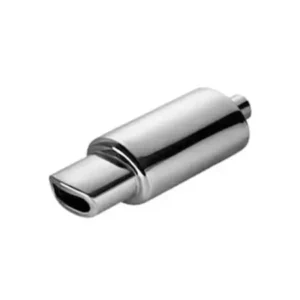Imagine holding a competitor’s product in your hands and unlocking its secrets—every curve, every feature—without starting from scratch. That’s the power of reverse engineering, a game-changer for product design that’s quietly revolutionizing how innovators like you bring ideas to life.
Too often, designers hit roadblocks: wasted time reinventing the wheel, ballooning costs, or missing what customers really want. It’s frustrating, right? But here’s the promise: reverse engineering can flip that struggle into success by giving you a shortcut to smarter, faster, and better designs. In this post, we’ll dive into what reverse engineering can do for your next project—practical steps, real benefits, and a few insider tips to spark your curiosity. Ready to see how it works?
Why Reverse Engineering Matters for Product Design
Reverse engineering isn’t just a buzzword—it’s a proven strategy that’s been shaping industries for decades. From automotive giants dissecting rival engines to tech startups refining gadgets, it’s about taking something apart to make something better. So, what can it do for you?
The truth is, starting a design from zero can drain time and money. Reverse engineering lets you skip the guesswork by studying what’s already out there—whether it’s a competitor’s hit or a forgotten prototype. According to a 2022 study by the National Institute of Standards and Technology (NIST), companies using reverse engineering cut development time by up to 35%. That’s expertise you can trust, and it’s why this approach is a must-know for anyone serious about product design.
How Reverse Engineering Fuels Innovation
Understanding the Process
So, how does it work? Reverse engineering is like being a detective for design. You take an existing product, break it down—physically or digitally—and figure out how it ticks.
Here’s a simple breakdown:
- Step 1: Analyze the Product – Study its shape, materials, and function. Tools like 3D scanning can map every detail.
Step 2: Create a Model – Use CAD software to build a digital version. Check out reverse engineering CAD for pro-level insights.
Step 3: Tweak and Improve – Add your own flair, fix flaws, or adapt it for your audience.
I’ve seen this firsthand—once, a friend in product design took apart a clunky old blender, scanned its parts, and built a sleeker, quieter version that sold out in weeks. It’s practical, and it works.
Sparking Fresh Ideas
Here’s where it gets exciting: reverse engineering doesn’t just copy—it inspires. By seeing how others solve problems, you uncover tricks you’d never think of alone. Maybe it’s a hidden hinge that saves space or a material tweak that cuts costs. There’s a thrill in discovering that “aha” moment—and it’s coming up later, so keep reading!
The Big Benefits of Reverse Engineering
Why bother? Because the payoffs are huge. Let’s unpack them:
- Saves Time – No need to design every nut and bolt from scratch. You’re building on what’s already proven.
Cuts Costs – Reusing existing concepts slashes R&D budgets. A 2023 report from Deloitte found firms using reverse engineering saved 20-30% on prototyping.
Boosts Quality – Learn from others’ mistakes and make your product stronger, faster, or lighter.
Stays Competitive – See what’s winning in the market and leap ahead with your own spin.
Companies like RnDesignsolutions, specialize in this, turning complex challenges into streamlined solutions. It’s not about stealing—it’s about standing on giants’ shoulders to reach higher.
Real-World Examples That Prove It Works
Still skeptical? Let’s look at some wins:
- Automotive Industry – Tesla famously reverse-engineered parts of luxury cars to perfect their electric models. The result? A global empire.
Consumer Tech – Ever wonder how budget earbuds suddenly rival AirPods? Reverse engineering cracked the code on sound and fit.
Medical Devices – Engineers have rebuilt outdated prosthetics into lighter, cheaper versions, changing lives.
These aren’t flukes—they’re proof reverse engineering delivers. What could it unlock for your project?
How to Start Reverse Engineering Your Next Design
Ready to try it? You don’t need a PhD—just curiosity and the right approach. Here’s how:
Step 1: Pick Your Target
Choose a product that’s close to your vision. It could be a competitor’s bestseller or an old design you want to revive. Ask yourself: What’s one thing I love (or hate) about this?
Step 2: Gather Tools
You’ll need:
- 3D Scanner – Captures every angle.
CAD Software – Turns scans into editable designs.
Basic Gear – Screwdrivers, calipers, or even a smartphone camera to start small.
Step 3: Dig In
Take it apart—literally or digitally. Note what works and what doesn’t. Pro tip: photograph each step so you don’t lose track.
Step 4: Build Better
Recreate it in CAD, then tweak. Maybe you simplify a part or swap steel for aluminum. This is where your creativity shines.
Need help? Firms like RDS offer 3D scanning and modeling services to make it painless.
Overcoming Challenges in Reverse Engineering
It’s not all smooth sailing. Here’s what might trip you up—and how to dodge it:
- Legal Risks – Copying too closely can breach patents. Solution? Always tweak enough to make it your own and check IP laws.
Tech Limits – Older products might stump modern scanners. Try manual measurements as a backup.
Time Crunch – Dissecting takes effort. Start small to build confidence.
Be honest: it’s work, but the payoff outweighs the hassle. I’ve messed up a few times—once overcomplicating a simple fix—but each stumble taught me more.
Extra Tips to Supercharge Your Results
Want to go beyond the basics? Try these:
- Test Early – Print a 3D prototype fast to spot flaws. See 3D printing options for ideas.
Talk to Users – What do they love about the original? Build that in.
Mix and Match – Combine features from multiple products for a standout hybrid.
Here’s that trick I promised: pair reverse engineering with customer feedback. It’s like having a cheat code—your design hits the mark every time.
Why You Should Act Now
The market’s moving fast. Competitors are already using reverse engineering to leap ahead. If you wait, you’re not just behind—you’re irrelevant. But start today, and you’re the one setting trends. What’s stopping you from grabbing a product and digging in?
Conclusion
Reverse engineering isn’t magic—it’s a practical, powerful tool to transform your next product design. It saves time, cuts costs, and sparks ideas you’d miss otherwise. From dissecting a rival’s gadget to reimagining a classic, it’s your shortcut to innovation.
So, pick up that screwdriver or fire up that scanner. The next big thing is waiting—and it’s in your hands to make it better. Which step will you try first? Drop a comment below—I’d love to hear your plans!





